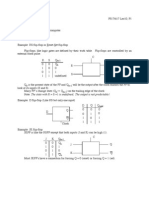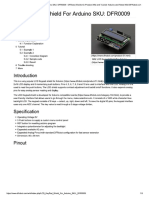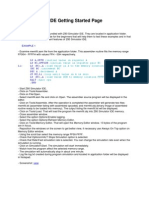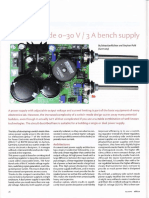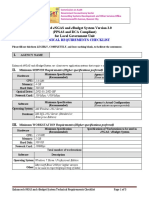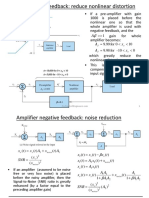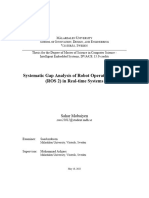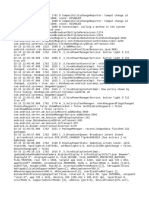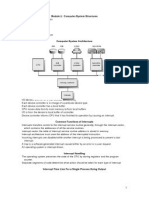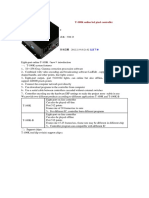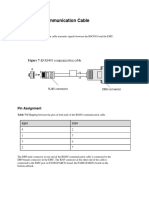0% found this document useful (0 votes)
198 views4 pagesD Latch - D Flip-Flop
This document discusses D latches and D flip-flops. It provides instructions on how to design a gated D-latch using NAND gates and inverters, including drawing a schematic and creating a truth table. It also compares the behavior of D latches and D flip-flops, noting that latches are level-sensitive and respond to input changes when the clock is high, while flip-flops respond only to input changes at the rising edge of the clock signal. A timing diagram is included to illustrate this difference.
Uploaded by
shitCopyright
© © All Rights Reserved
We take content rights seriously. If you suspect this is your content, claim it here.
Available Formats
Download as PDF, TXT or read online on Scribd
0% found this document useful (0 votes)
198 views4 pagesD Latch - D Flip-Flop
This document discusses D latches and D flip-flops. It provides instructions on how to design a gated D-latch using NAND gates and inverters, including drawing a schematic and creating a truth table. It also compares the behavior of D latches and D flip-flops, noting that latches are level-sensitive and respond to input changes when the clock is high, while flip-flops respond only to input changes at the rising edge of the clock signal. A timing diagram is included to illustrate this difference.
Uploaded by
shitCopyright
© © All Rights Reserved
We take content rights seriously. If you suspect this is your content, claim it here.
Available Formats
Download as PDF, TXT or read online on Scribd
/ 4
